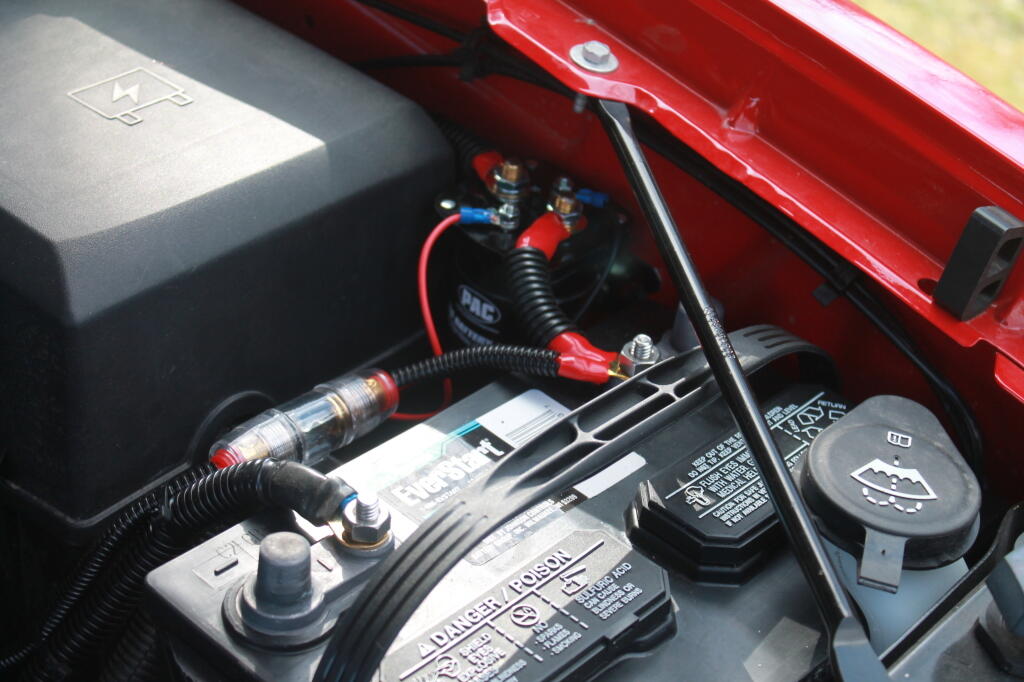Some Snow Left
How state dealt with the EAB found in forest preserve
The state's constitution prohibits the cutting or removal of timber in the forest preserve -- and gives no exception to forest health.
So how did the state address this when an Emerld Ash Borer was found at Kenneth L. Wilson Forest Preserve Campground in Woodstock?
The state has limited authority to remove "hazard" trees over trails and roads, and used it remove a limited number of infected ash. They also girlded selected ash trees to attract EAB to them.
The DEC has be really careful here not to run afoul of the state constitution, as the courts are not likely to allow full-scale removal of ash trees, like they do for infected non-forest preserve plots.
Can a 100 watt solar panel beat an occasionally run 150 amp alternator ?
A 100-watt solar panel in theory can put 7.35 amps at 13.6 volts. In contrast, an 150 amp alternator, run at highway speeds can in theory put out 150 amps at 13.6 volts. Except that 150 amp alternator will put out nearly half as much electricity at idle or maybe 70 amps due to the engine running at half it’s highway speed, and that’s before the regular electrical loads of an engine’s computer and headlights take their bite out of power supply.
When I camp, I usually use my deep cycle battery mounted under my truck’s hood to power my campsite, radio, and other equipment. It works fairly well, but after a while, it becomes discharged and I need to start the truck’s engine to charge it back up for 10 minutes when I hear the low battery alarm or the truck’s computer notices a low battery. I probably have to do this once every 1.5 to 2 hours. This keeps the battery fairly healthy, but it’s still not as strong as when I first arrived at the campsite, after often hours of charging at the maximum necessary charge provided by the alternator.
Energy Math
Amps are the amount of current Voltage is with how much force the current is moving, e.g. 13.6 watts Wattage is amount of work consumed, e.g. 12 watt LED bulb Amp Hours are the number of amps consumed per hour Watt Hours are the number of watts consumed per hour Amp = Wattage / Voltage
The Truck’s Charging At Idle
Alternator Peak Output – 150 amp Typical Output at Idle (possibly lower after predatory loads) – 70 amp Voltage – 13.6 volts Charging Hours – 10 minutes every 1.5 hours = 0.11 hour charging Amp Hours Charged (over 1.5 hours) – 7.7 amp/hr Watt Hours Charged (over 1.5 hours) – 105 watt/hr Watt Hour Charged per 10 hour day (assuming I start the truck every 1.5 hours during 10 hours) – 0.7 kW/hr
100 watt solar cell
Solar Cell Output – 7.35 amp Realistic Solar Output – 5.1 amp (70% of maximum on sunny day) Voltage – 13.6 volts Charging Hours – 1.5 hour Amp Hours Charged (over 1.5 hours) – 7.7 amp/hr Watt Hours Charged (over 1.5 hours) – 105 watt/hr Watt Hour Charged per 10 hour day – 0.7 kW/hr
A 100-watt solar panel which operates all day when the sun is it on will produce more energy than an alternator running only occasionally.




